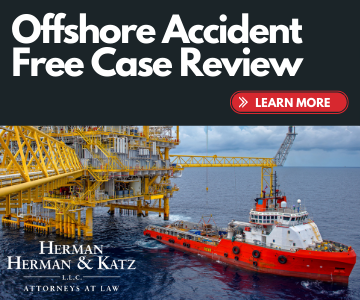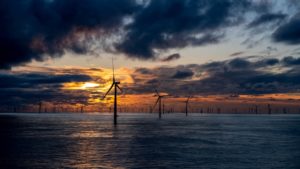
In 2025, the Gulf of Mexico will be open to wind lease sales, and wind farms could be operational as early as 2028. Wind farms are most likely to be developed off the coast of Louisiana and Texas, creating anywhere from 7,300 to 14,700 offshore construction jobs and up to 2,800 permanent positions. It’s estimated the area could generate 510,000 megawatts of wind energy each year, twice the energy the five Gulf states use annually.
Creating wind farms off the Gulf of Mexico will infuse the area with much-needed opportunities for the unemployed; there have been significant job losses in the oil and gas industry in the last ten years, leaving many without work. Conveniently, the skills needed to construct and maintain wind turbines are well-suited to oil and gas workers.
As renewable energy projects become increasingly important to address and reduce greenhouse gas emissions, more and more businesses are investing in wind farms as a necessary energy source.
But offshore workers face greater rates of injuries than those in many other industries. Wind turbine workers are no different, yet workers’ compensation doesn’t protect those in offshore jobs. As more money is invested in wind farms on a state, national and global level, protecting and adequately compensating injured wind farm workers is crucial. This is where maritime law comes in, specifically, the Jones Act, which allows certain types of injured offshore workers to sue their employer for negligence.
Are Offshore Wind Farm Workers Covered Under the Jones Act?
The creation of wind farms will require thousands of Jones Act seamen. Offshore workers who make a claim under the Jones Act need to prove negligence was the cause of or contributed to the injury in order to sue their employer, but this hangs on whether workers meet the requirements of a seaman.
The Jones Act states that a seaman is someone who works on a vessel in navigation and contributes to the work of the vessel. A vessel in navigation doesn’t mean it must be in motion when the injury occurs. It’s simply that the vessel must be capable of moving and be afloat, in operation, and on navigable waters. Since much of the work on wind turbines require workers to be on a vessel, these offshore workers can often make a claim under the Jones Act.
In general, seamen must spend at least 30% of their time working on a vessel or fleet of vessels owned by the same company. As far as contributing to the ship’s work, this requirement covers a wide range of workers, not just those who construct or maintain wind turbines. Others, such as cooks, may be covered under the Jones Act since they help ensure work progresses towards completing the vessel’s mission.
Why are Wind Farms Coming to the Gulf of Mexico?
Currently, there are no offshore wind farms in the Gulf of Mexico. In previous years, the Gulf’s less powerful winds, aside from hurricanes, and the low cost of energy, led wind developers to focus mainly on the East Coast of the U.S. That changed when research emerged that showed the true value of wind farms in the Gulf.
The area’s shallow waters, smaller waves, and warmer temperatures make up for the slower wind speeds. These conditions make offshore wind energy in the Gulf of Mexico less expensive because the turbines don’t have to be as tall, ultimately cutting construction and maintenance costs. And with so many Louisiana workers unemployed due to the downswing in oil and gas production, wind farms could be a win-win for all involved.
In addition, Louisiana’s Governor John Bel Edwards set a goal of net-zero carbon emissions by 2050. Combined with other initiatives on a federal level and growing concerns about global warming, wind farms off the coast of Louisiana are a step towards a greener future. Renewable energy sources are a must to address looming, irreversible damage caused by non-renewable energy production and use.
Types of Wind Farm Accidents and Injuries
Employers are required to ensure safe working conditions for their offshore workers, including those on wind farms. For example, they must provide the appropriate training, hire qualified workers, provide the right equipment, and keep equipment maintained and safely secured. However, many offshore workers face unnecessary dangers that result in injuries – even death.
Claims under the Jones Act could cover a wide range of injuries on wind farms, including those caused by:
- Slips and falls
- Noise exposure
- Electrocution
- Weather conditions
- Fires and explosions
- Gas and vapor exposure
- Improperly secured machinery
- Negligent crewmembers
- Inadequate safety training
- Poorly maintained or broken equipment
Related: What Risks Do Wind Farms in the Gulf Bring for Offshore Workers?
As wind farms are built in the Gulf of Mexico, more offshore accidents are bound to occur. Workers are in more dangerous situations than the average person, both on the journey to an offshore wind farm and while working on one. From long work hours to falls from great heights, offshore accidents can have a devastating, lifelong impact on the injured and their families.
At the end of the day, renewable energy sources are a necessity for our planet’s survival, and greater emphasis on projects like offshore wind farms is expected. But protecting and properly compensating those injured offshore is a must.
The Louisiana maritime law attorneys at Herman, Herman & Katz have extensive experience representing offshore workers and their families, proving negligence as it applies to the Jones Act. For more information or a free case review, contact us online or call 844-943-7626.

Jed Cain is a partner with Herman, Herman & Katz, LLC. He has dedicated his career to representing injured folks and their families.

















Comments for this article are closed.